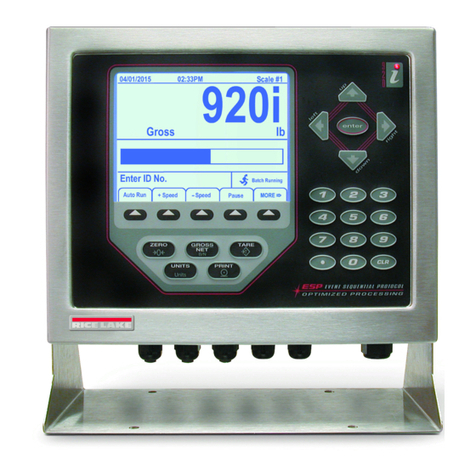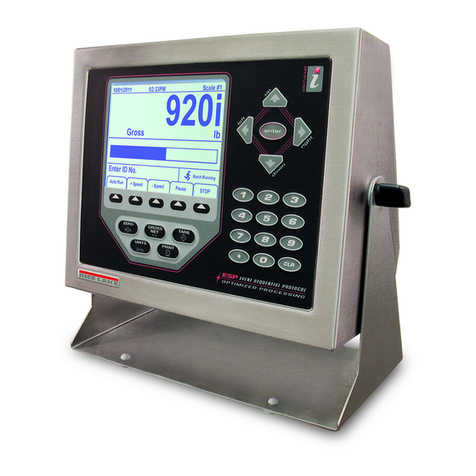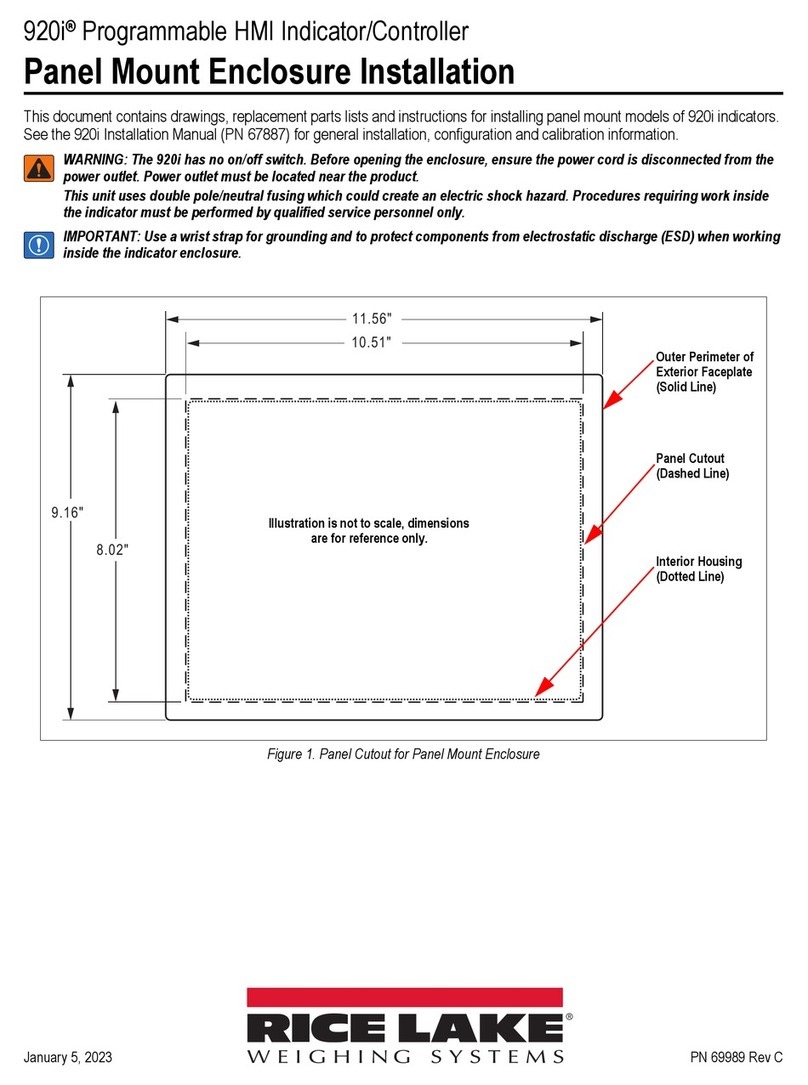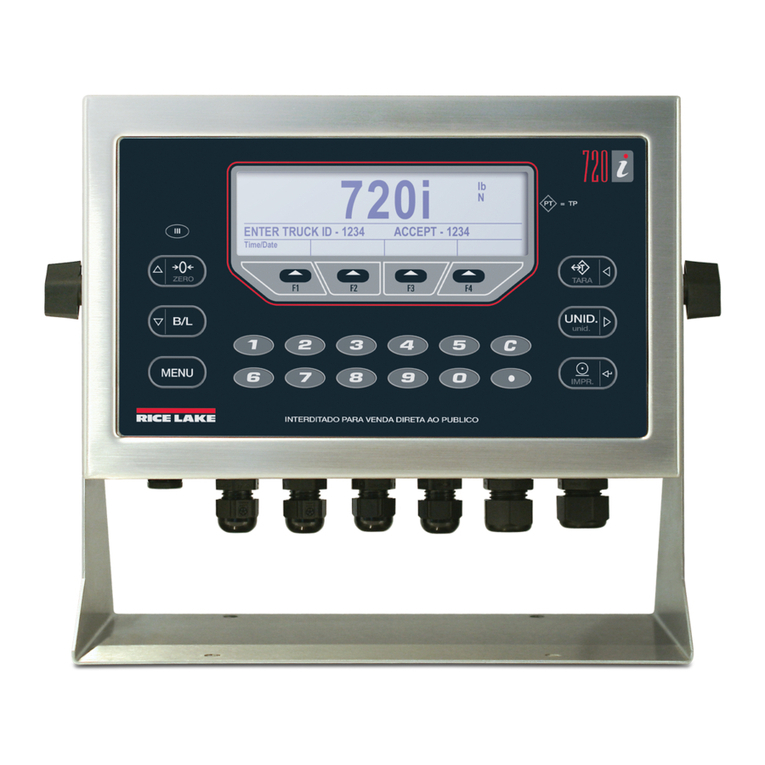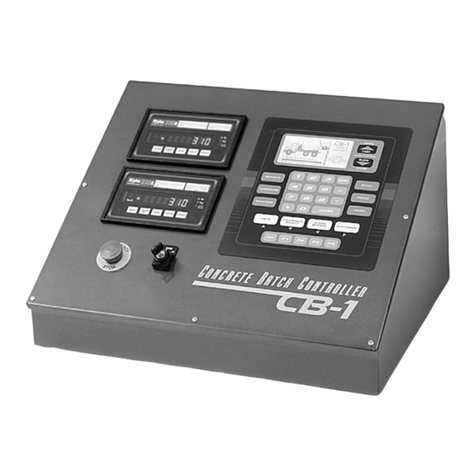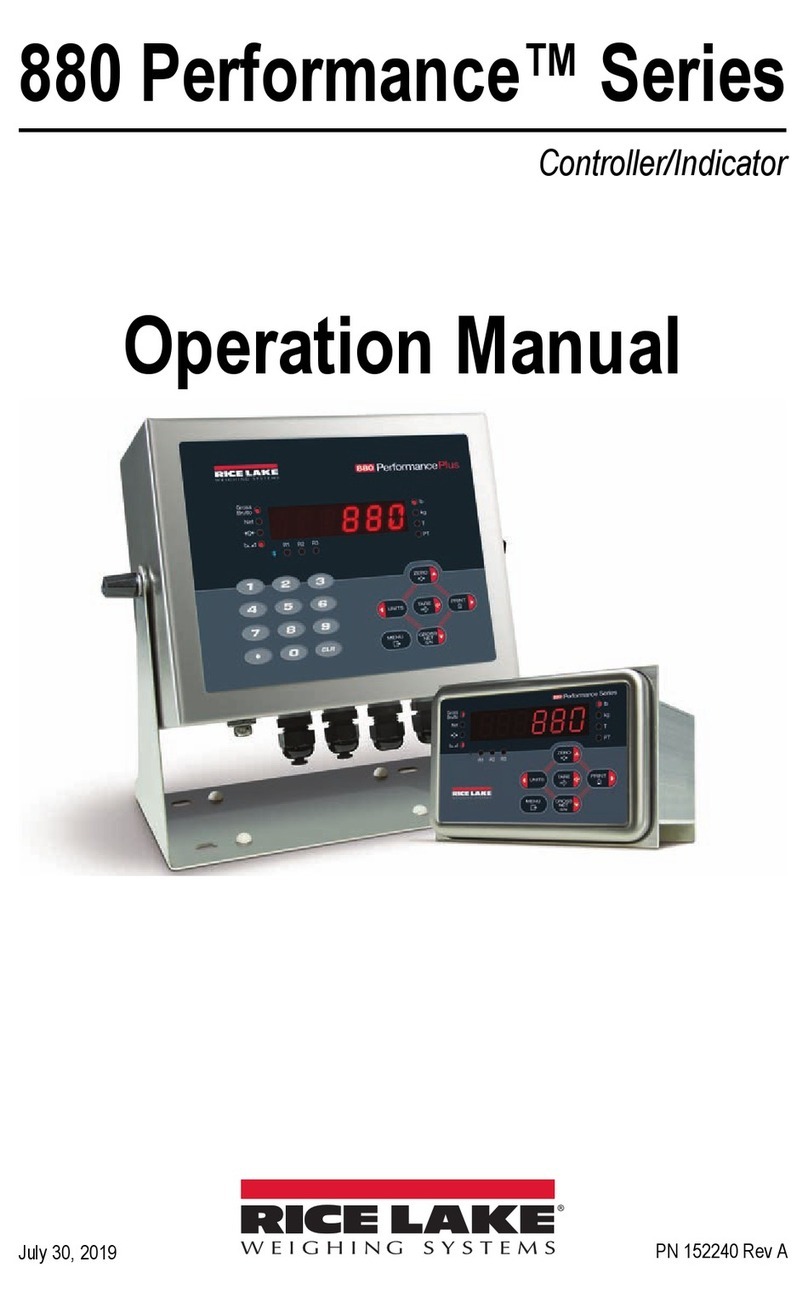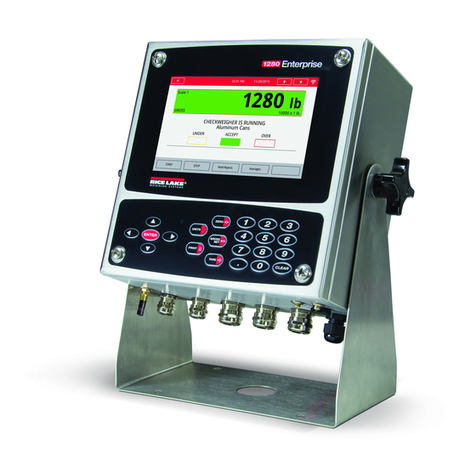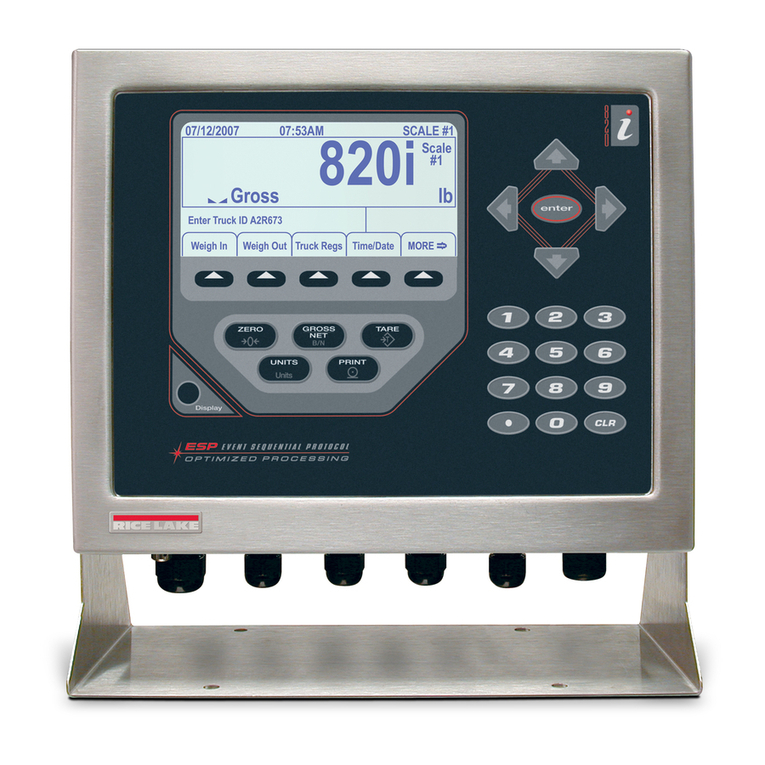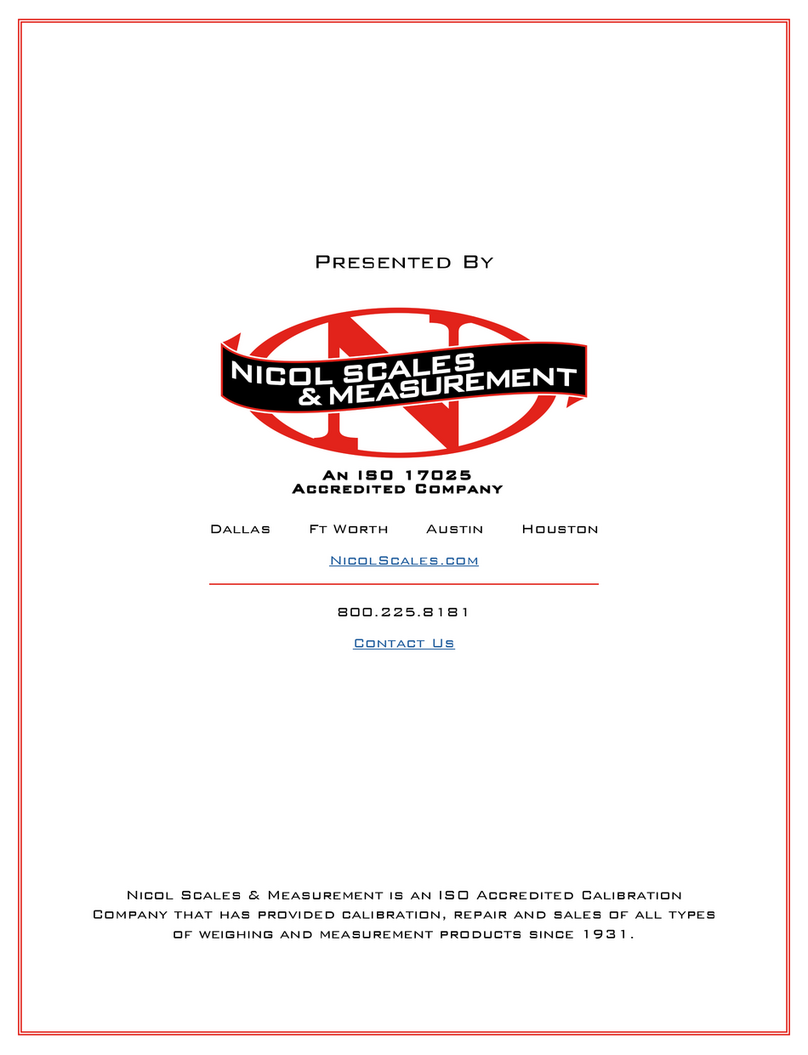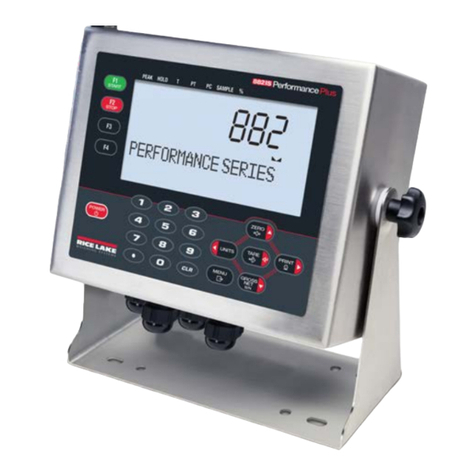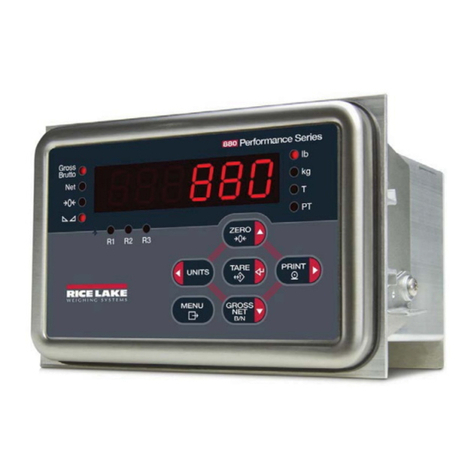
6820i Installation Manual
2.0 Installation
This section describes procedures for connecting load
cell, digital I/O, and serial communications cables to
the 820i indicator. Assembly drawings and replacement
parts lists for the universal model are included for the
service technician. See Section 10.11 on page 101 for
dimension drawings.
CAUTION
• Use a wrist strap to ground yourself and protect
components from electrostatic discharge (ESD)
when working inside the indicator enclosure.
• This unit uses double pole/neutral fusing which
could create an electric shock hazard. Procedures
requiring work inside the indicator must be
performed by qualified service personnel only.
• The supply cord serves as the power disconnect for
the 820i. The power outlet supplying the indicator
must be installed near the unit and be easily
accessible.
2.1 Unpacking and Assembly
Immediately after unpacking, visually inspect the 820i
to ensure all components are included and undamaged.
The shipping carton should contain the indicator, this
manual, and a parts kit. If any parts were damaged in
shipment, notify Rice Lake Weighing Systems and the
shipper immediately.
See Section 2.9 on page 11 for parts kit contents.
2.2 Enclosure Disassembly
The indicator enclosure must be opened to install
option cards and to connect cables for installed option
cards.
WARNING
The 820i has no on/off switch. Before
openingtheunit,ensurethepowercordis
disconnected from the power outlet.
Ensure power to the indicator is disconnected, then
place the indicator face-down on an anti static work
mat. Remove the screws that hold the backplate to the
enclosure body, then lift the backplate away from the
enclosure and set it aside.
2.3 Cable Connections
The universal model of the 820i provides six cord grips
for cabling into the indicator: one for the power cord,
five to accommodate other cabling. Install plugs in all
unused cord grips to prevent moisture from entering
the enclosure.
2.3.1 Cable Grounding
Except for the power cord, all cables routed through the
cord grips should be grounded against the indicator
enclosure. Do the following to ground shielded cables:
• Use the lockwashers, clamps, and kep nuts
provided in the parts kit to install grounding
clamps on the enclosure studs adjacent to cord
grips. Install grounding clamps only for cord grips
that will be used; do not tighten nuts.
• Route cables through cord grips and grounding
clamps to determine cable lengths required to reach
cable connectors. Mark cables to remove insulation
and shield as described below:
• For cables with foil shielding, strip insulation
and foil from the cable half an inch (13 mm) past
the grounding clamp (see Figure 2-1). Fold the
foil shield back on the cable where the cable
passes through the clamp. Ensure silver
(conductive) side of foil is turned outward for
contact with the grounding clamp.
• For cables with braided shielding, strip cable
insulation and braided shield from a point just
past the grounding clamp. Strip another half inch
(15 mm) of insulation only to expose the braid
where the cable passes through the clamp (see
Figure 2-1).
Cord grip
Insulated cable
Foil (silver side out) Grounding clamp
Shield wire (cut)
Length of foil before folding
back on cable insulation
Cut insulation here
for foil-shielded cables
Braid
Cut insulation here
for braided cables
NOTE: Install lockwashers
first, against enclosure,
under grounding clamp
Figure 2-1. Grounding Clamp Attachment for Foil-Shielded
and Braided Cabling
• For load cell cables, cut the shield wire just past the
grounding clamp. Shield wire function is provided
by contact between the cable shield and the
grounding clamp.
• Route stripped cables through cord grips and
clamps. Ensure shields contact grounding clamps
as shown in Figure 2-1. Tighten grounding clamp
nuts.
• Finish installation using cable ties to secure cables
inside of indicator enclosure.
2.3.2 Load Cells
To attach cable from a load cell or junction box to the
820i, route the cable through the cord grip and ground
the shield wire as described in Section 2.3.1 on page 6.
